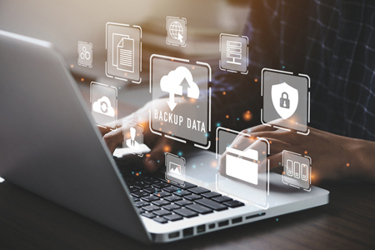Demystifying Data as a Service (DaaS)
By Christian Bonawandt

Most drinking water and wastewater utility professionals are familiar with the concept of software as a service (SaaS). This model, in which the user pays for a subscription to software rather than buy it outright, has gradually proliferated into other areas, including network as a service (NaaS), metering as a service (MaaS), and more.
Among the more recent of such business models being deployed in the water industry has been data as a service (DaaS). Like other “as a service” offerings, the idea is to take the burden of ownership off the customer. But for many water industry professionals, it can be confusing how that works and where the value lies. To get a better understanding, it helps to break down exactly what this service tends to entail and what problems it aims to solve.
What Is DaaS?
Similar to how SaaS delivers software and licensing through an online subscription model, DaaS offers to manage equipment installation, data collection and transmission, and hardware operation and maintenance. Software delivery and licensing are also included as a core element.
Within the water sector, the SWAN DaaS Community defines DaaS as “a partnership model where a technology supplier operates and maintains hardware for collecting, transmitting, and processing data, and the utility pays only for the delivered results. The hardware in question can include flow meters, sensors, level monitors, telemetry equipment, and more. With DaaS, utilities pay only for the outcome and do not have to account for the costs of installation, maintenance, data collection, or data storage. As such, these risks fall on the DaaS provider. What the water utility receives will often depend on the type of contract and the vendor in question but can range from raw data delivery to summary reports and even predictive analytics.
DaaS vs. MaaS vs. NaaS?
Water utilities have likely heard of MaaS and NaaS. These are all similar business models to DaaS. The difference between them is largely about the size and scope of the service being offered. For example, as the name implies, MaaS is focused on the installation and maintenance of meters, as well as the delivery and management of meter data. NaaS vendors handle the construction and maintenance of data transmission infrastructure, such as radio and/or cellular towers, as well as in-house receivers and more.
Depending on the vendor and the contract, DaaS may overlap with MaaS and NaaS. For example, vendors that offer meters are likely to include the hardware and data in their offerings. If the same or other vendors can provide network and transmission services, then this too could be included. In some cases, the terms may be interpreted as interchangeable.
How Does DaaS Work With Preexisting Hardware?
Many DaaS solutions involve the installation of new sensors, meters, and other data-generating systems. However, DaaS does not have to require new hardware. A DaaS solution can often work with existing technologies and range of manufacturers; the solution provider simply takes over responsibility for maintaining, repairing, and upgrading them. Other times, a water utility may choose selective outsourcing, adopting DaaS for specific sensors or for a designated segment of the distribution (for drinking water) or collection (for wastewater) system. The rest remains the responsibility of the utility. Alternatively, depending on the contract offerings, the utility could choose to outsource data analytics and reporting, retaining control over O&M.
Why Adopt DaaS?
The primary reason for drinking water and wastewater utilities to adopt a DaaS solution include reducing operational load on employees and reducing risk to the utility itself. However, other motivating factors can include:
Lower costs. Many DaaS vendors insist it can lower capital and/or operating costs.
Focus on core activities. DaaS allows utility personnel to concentrate on their main business activities.
Eliminating barriers. Water utilities can bypass the upfront capital costs and logistical hurdles often associated with acquiring and operating new technologies.
Predictable cash flow. With fixed monthly payments, the costs of equipment O&M, data collection, cleaning, and analysis are more stable, which makes it easier to forecast budget expenses.
Time and labor savings. DaaS reduces the need to train and retain staff to manage a network's operational status.
Get more out of data. Utilities may also adopt DaaS because it allows them to focus on enjoying the benefits of the data and/or analyses, rather than managing the network and associated data infrastructure.
Who Is DaaS NOT for?
As with any solution, DaaS is not one-size-fits-all, which means some utilities may struggle to realize the value of the service. For example, those which have already spent money and manpower developing in-house tools and infrastructure that can produce much of the same results as DaaS are unlikely to adopt such solutions. In addition, many utilities may struggle with cultural resistance, have concerns about loss of control over assets or data, or lack the necessary IT expertise. In some cases, regulations regarding data storage and access may hinder adoption.
As data becomes increasingly important to the water industry, DaaS offers a way to solve specific business challenges. While it is not a universal solution, for utilities seeking to enhance efficiency, improve data utilization, and mitigate operational risks, DaaS can be a powerful tool. As the industry and technology continues to evolve, understanding and evaluating these service-based models will be key to making informed decisions about future investments in data management.
